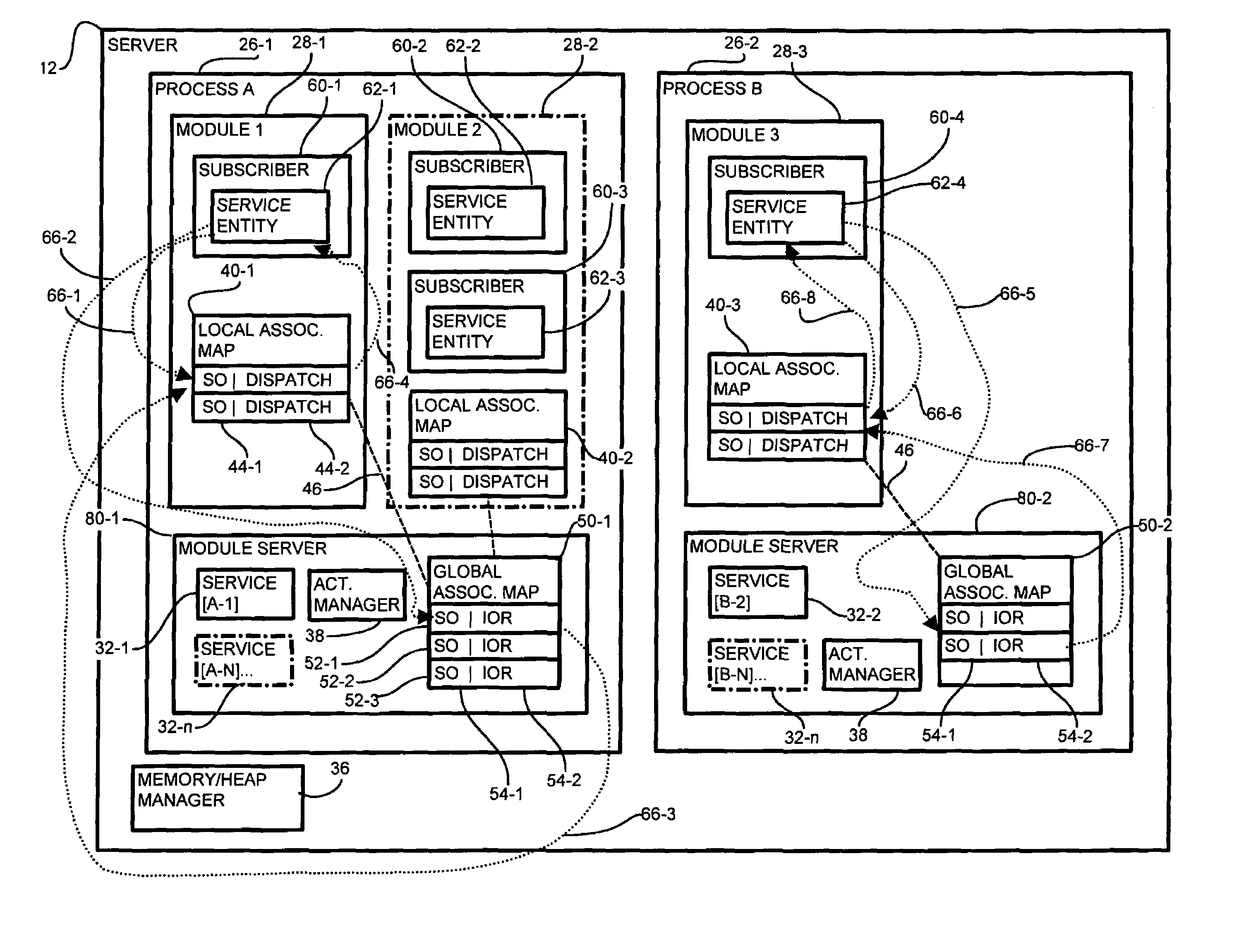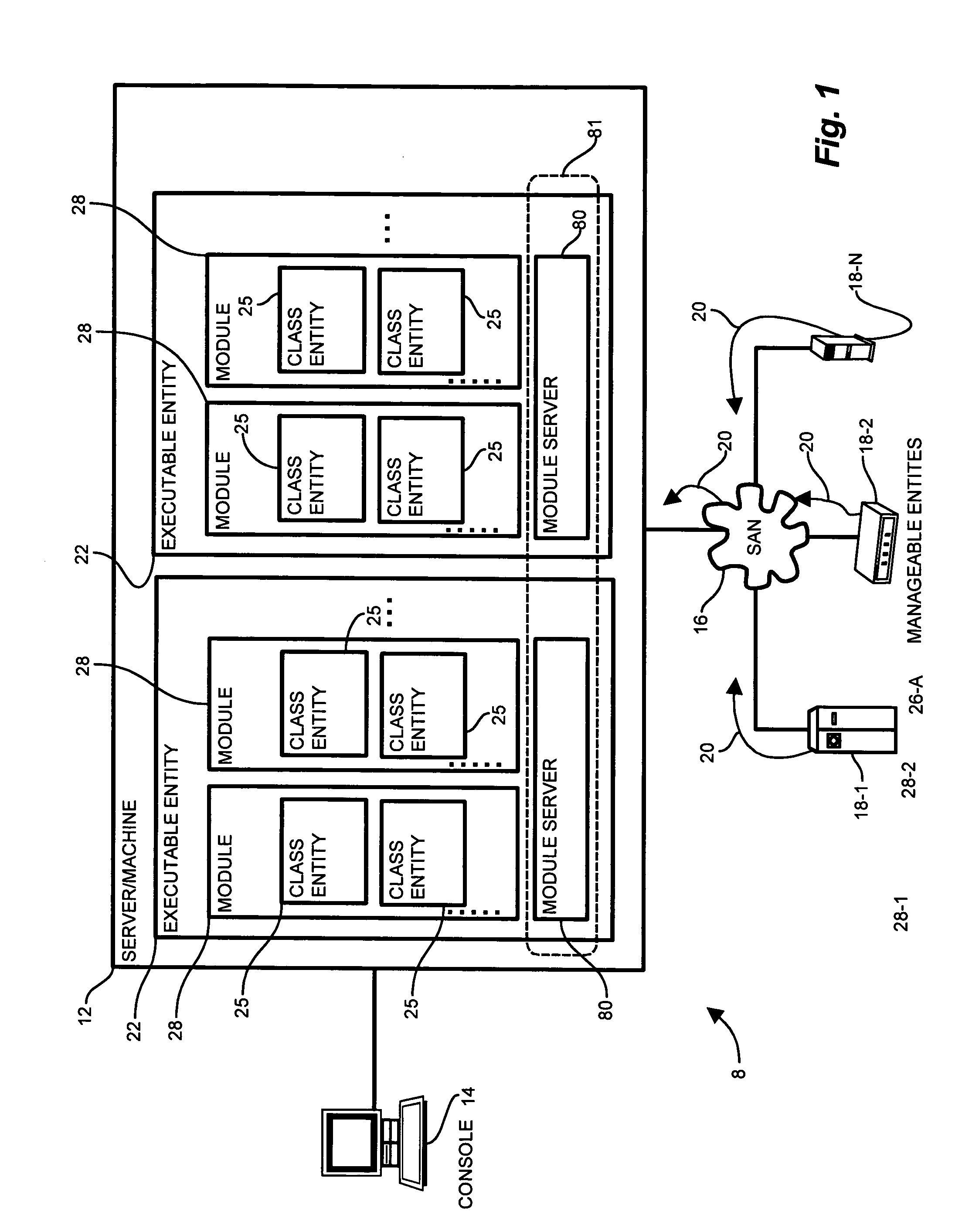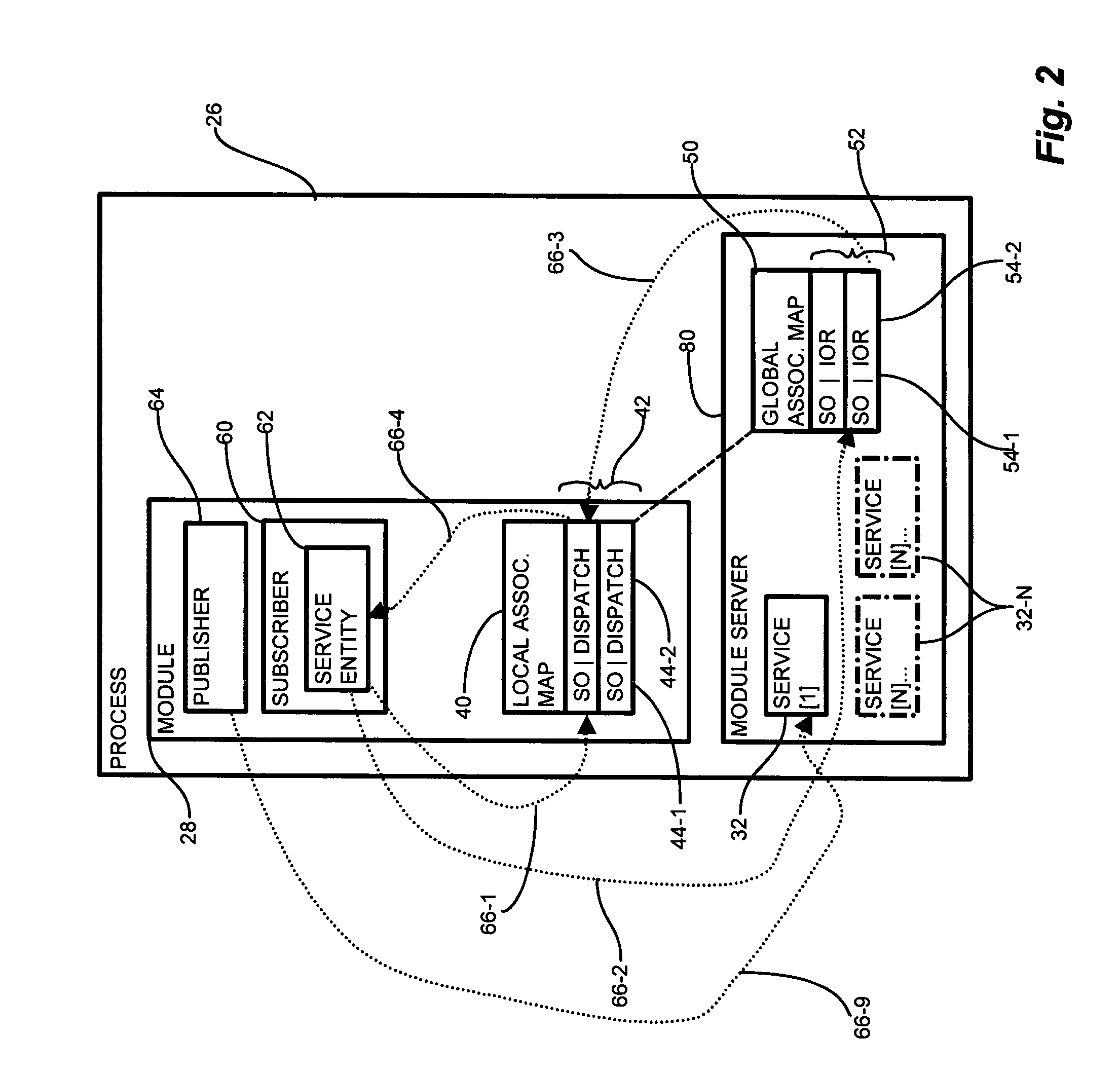Methods and apparatus for providing extensible lightweight services in a data storage environment
a data storage environment and lightweight technology, applied in the field of conventional managed information environment, can solve the problems of unavailability of predefined or sufficiently automated and seamless service access and invocation, development efforts often consume substantial time and effort, and staffing education issues, so as to reduce memory consumption and memory consumption
- Summary
- Abstract
- Description
- Claims
- Application Information
AI Technical Summary
Benefits of technology
Problems solved by technology
Method used
Image
Examples
Embodiment Construction
[0028]The system of the present invention defines a general, seamless, extensible services architecture operable with a variety of services. The exemplary services architecture disclosed below depicts deployment of services entities and invocation of the services entities via the subscribers containing the services entities. Activation and deactivation of the modules including the services entities occurs automatically, without developer (user) intervention, therefore relieving the developers of designating logic for detecting and controlling activation, or enablement, and passivation, or disablement, of the modules including the respective service entities. Module activation and deactivation, and subscriber invocation to perform the services entities occurs via the service, following definition by the registration, discussed further below.
[0029]Particular configurations of the invention provide a method for an extensible services architecture, or infrastructure which localizes the ...
PUM
 Login to View More
Login to View More Abstract
Description
Claims
Application Information
 Login to View More
Login to View More - R&D
- Intellectual Property
- Life Sciences
- Materials
- Tech Scout
- Unparalleled Data Quality
- Higher Quality Content
- 60% Fewer Hallucinations
Browse by: Latest US Patents, China's latest patents, Technical Efficacy Thesaurus, Application Domain, Technology Topic, Popular Technical Reports.
© 2025 PatSnap. All rights reserved.Legal|Privacy policy|Modern Slavery Act Transparency Statement|Sitemap|About US| Contact US: help@patsnap.com



